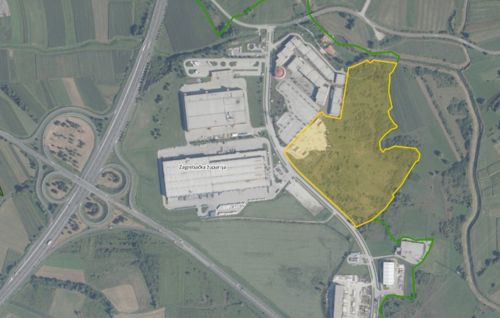14 sqm of solitude
ArchitectureThe location of the slit: +52° 14' 15.88", +20° 59' 20.85". Wola district, Warsaw, Poland. At the junction of ul. Żelazna and ul. Chłodna. A gap between a pre-war tenement house and a tower block from the 1960s. This bizarre place has attracted the attention of the architect Jakub Szczęsny. A house is now to be built here, which the media have promptly labelled the narrowest house in the world. The architect himself refers to his work as "the impossible house". It will only have a width of 152 cm on the side facing ul. Żelazna and only 92 cm on the side facing the backyard. And its length is 12m. The area of the whole house will amount to 14 sqm. The architect has been trying to develop his unusual project for a few years. It is intended as the fulfilment of some kind of dream or fantasy. There are indications that the impossible house will welcome its first resident as soon as in December this year - the well-known Israeli writer Etgar Keret.
Solitude in the city
"This place ignited my imagination," says Jakub Szczęsny. "I had been fantasising about narrow plots of land for some time. I am also interested in the topic of solitude in the city. I wanted to create a house for an observer of life, and the Israeli master of short-form fiction immediately emerged as the first, most suitable resident of this house." Despite its non-standard size it is going to be a real house - with a bedroom, a kitchenette, a desk, a small bathroom and a mini septic tank. And with only 14 sqm! Let's be honest - the whole thing seems to be more of an artistic installation than a traditional house. However, all kinds of building permits are needed in order for the concept to materialise. What about the project costs? The originator of the idea, who belongs to the Centrala architectural studio - famous for projects such as Ohel, a tent announcing the construction of the Museum of the History of the Polish Jews and the revitalisation of one of the pavilions of Warsaw's Powiśle railway station (now a popular café that hosts cultural events) - is getting closer and closer to raising the funds needed for the development of the project. Warsaw city council is also supporting the project, for which they have earmarked PLN 150,000. Despite the fact that Warsaw recently lost the battle for the title of the European Capital of Culture 2016 to Wrocław, the architect is hoping that it will be possible to extend the life of this artistic residence by two more years through the European Capital of Culture initiative. "The city is supporting the project, but there are formalities which cannot be avoided, even with an artistic installation," admits Jakub Szczęsny. "The choice of Wola district is no accident. It remains a highly symbolic place, where an attempt to erase history was once made. The past of the district, which is associated with pre-war tenements housing poor tenants, was supposed to be eradicated under the communist regime that followed, by replacing the buildings with the then new, socialistic architecture. The site chosen for the project reflects the two different periods best. The artistic house will be squeezed between two buildings representing different periods in our history," declares Jakub Szczęsny.
Readings for the chosen ones
The foreign press are already showing some interest in this innovative project a few months before its development. At the same time, the first resident of the house is getting ready to move to Warsaw in December later this year. Warsaw is a particularly important place for Etgar Keret: this is where his parents met each other, and so he feels especially connected with Warsaw and Poland. He is planning to organise readings of his stories in the house, but due to the lack of space the audience will be limited to one person. Future residents will be able to use "the impossible house" as their studio. Meanwhile, the construction of the long-awaited Museum of Modern Art in Warsaw has still to get underway. A growing number of people are warning that Warsaw's defeat in the battle for the title of the European Capital of Culture to Wrocław might serve as an excuse for yet another delay in the development of this project. So we should be happy that smaller, not so widely-announced projects are being launched. Interesting architecture, unusual solutions and the promotion of Wola district and Warsaw at the same time? It seems that it is not only the future residents of the house that will benefit from the project.
Mladen Petrov





















































